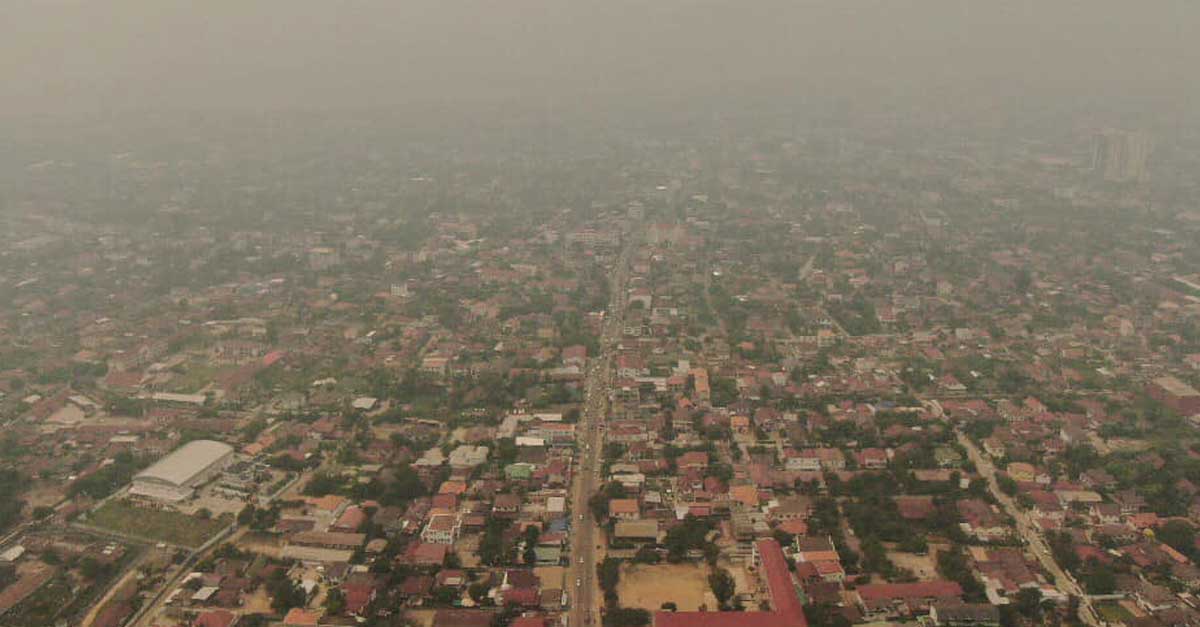The Lao government is closely monitoring air quality in the capital of Vientiane as pollution levels rise, although the current level of air quality meets set safety standards.
Air quality tests conducted between February 12 and 13 showed the amount of particulate matter (PM) 2.5 stood at 32.1µg/m3 over 24 hours. Such a figure is less than the set national standard PM2.5 = 50 µg/m3.
PM 2.5 refers to atmospheric particulate matter with a diameter of fewer than 2.5 micrometers. Particles in this category are so small that they can only be detected with an electron microscope.
Since they are so small and light, fine particles tend to stay longer in the air than heavier particles. This increases the chances of humans and animals inhaling them into their bodies.
Studies have found a close link between exposure to fine particles and premature death from heart and lung disease. Fine particles are also known to trigger or worsen chronic diseases such as asthma, heart attack, bronchitis, and other respiratory problems.
Fine particles can come from various sources. In Laos, the widespread illegal burning of garbage, rice fields, and scrubland are often cited as the main cause.
To tackle such an issue, the city of Vientiane officially banned the burning of garbage in December last year.
At that time, the city outlined the types of household burning and other types of open burning that are officially prohibited citywide.
According to the new regulations, citizens are prohibited from burning garbage, dry rice fields, and trees or brush in all urban areas of the capital.
Laos, especially Vientiane, last year suffered dangerous levels of air pollution caused by domestic wildfires and in neighboring nations.
In March last year, the Ministry of Natural Resources and Environment issued a report on the situation to say PM 2.5 particles had been much higher than the average and had been increasing rapidly between March 9 and 14.



